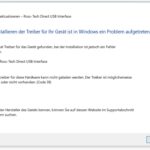After cleaning the DPF on a VW Crafter, resetting the DPF settings with VCDS is crucial. This guide outlines the process and addresses common challenges. Many VW Crafter owners experience repeated DPF warnings, often due to city driving and interrupted regeneration cycles. While dealers often recommend replacing the DPF, EGR, inlet manifold, and turbo, cleaning these components can be a viable alternative.
Understanding DPF Regeneration and Resetting with VCDS
Once the DPF and related parts have been cleaned, the engine control unit (ECU) needs to be informed. This involves resetting the DPF adaptation values using VCDS (Vag-Com Diagnostic System). Without this reset, the ECU will continue to operate based on the old, pre-cleaning data, potentially leading to further DPF issues and warning lights. The process, however, is not straightforward and often requires navigating security access protocols within VCDS.
Overcoming Security Access Challenges in VCDS
Accessing the necessary adaptation channels often requires a security access code (PIN/SKC). Obtaining this code can be problematic, as VW dealers may be reluctant to provide it. The Ross-Tech wiki provides guidance for 2.0L CR TDI engines (http://wiki.ross-tech.com/wiki/index.php/2.0L_CR_TDI), but this process typically involves security access. Without the correct PIN/SKC, adapting or resetting the DPF values becomes impossible. This highlights the ongoing debate regarding the right to repair and access to proprietary information.
Resetting DPF Values: Carbon Mass and Soot Accumulation
Beyond security access, understanding the specific adaptation channels is critical. The “Carbon Mass (ECM/DPF Replacement)” channel within Long Adaptation requires careful adjustment. The displayed value represents the accumulated soot. Entering “1” in the “new value” field is believed to reset the DPF completely. However, accurately calculating the soot accumulation since cleaning and entering the correct grams per kilometer figure is essential for proper DPF function. The “Consumption Since Regen” value also provides valuable insights into DPF performance.
Forced Regeneration and DPF Reset Procedures
A forced regeneration (http://wiki.ross-tech.com/wiki/index.php/Diesel_Particle_Filter_Emergency_Regeneration) might be necessary before or after the reset. This process initiates a controlled burn cycle to eliminate accumulated soot. Determining the optimal sequence—forced regeneration followed by reset, or vice versa—remains a point of discussion. Experimentation and careful monitoring of DPF parameters are often required.
Conclusion: Successfully Resetting Your VW Crafter’s DPF with VCDS
Successfully resetting the DPF on a VW Crafter after cleaning involves overcoming security access hurdles, understanding the relevant adaptation channels, and potentially performing a forced regeneration. While resources like the Ross-Tech wiki offer valuable guidance, practical experience and careful monitoring are essential. The lack of a specific “cleaning” adaptation further complicates the process. This underscores the need for clear documentation and accessible information for vehicle owners seeking to perform DPF maintenance themselves. Further research into “DPF statistics” within VCDS might provide additional insights for optimizing DPF performance after cleaning. Remember to always proceed cautiously and consult with experienced VCDS users if you encounter difficulties.

